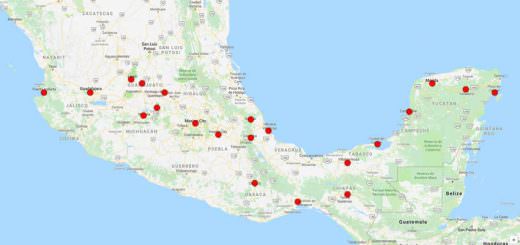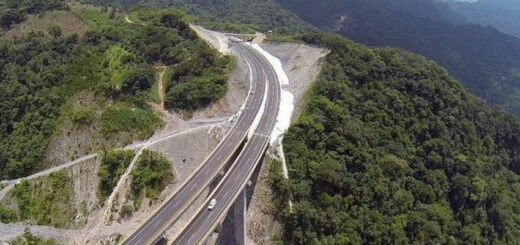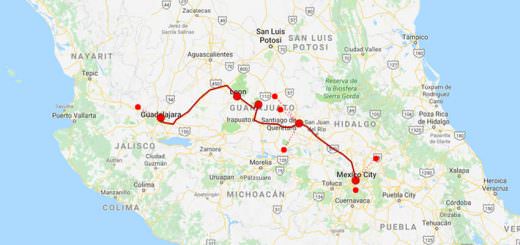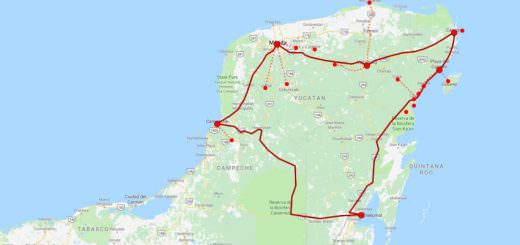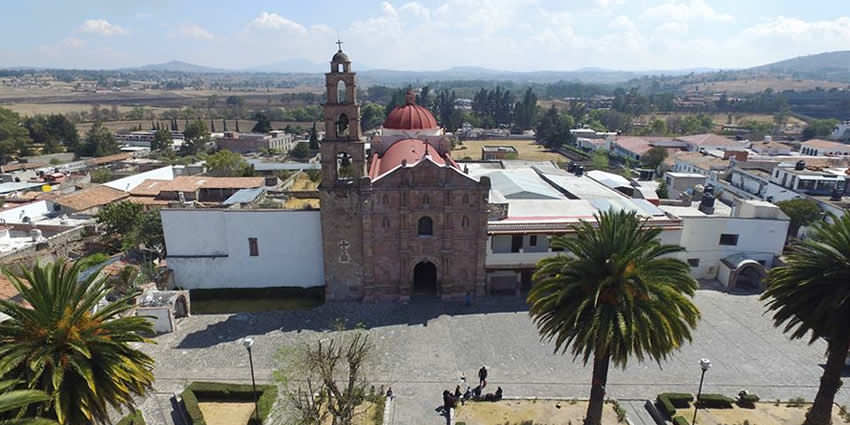
Aculco de Espinoza
Aculco de Espinoza (former San Jerónimo Aculco) is a town and the seat of the municipality called Aculco in Mexico State.
Aculco contains numerous geographic features suitable for tourism. Two cascades are located in the area: “Tixhiñu” and “la Concepción”. Many rivers, including the Río Ñadó and Río Prieto also flow through the municipality.
According to INEGI, in 2005, Aculco has a population of over 40,000. The ethnic composition is mainly Otomi.
Over 16,000 people in the region are illiterate.
In Aculco, its traditional architecture is still visible, full of alleys, houses with large patios and corridors, constructions supported by quarry columns and cobbled streets.
In addition, Aculco is home to numerous historic sites, including the San Jerónimo and the “Garrido Varela” (a bullring), as well as the former residence of Miguel Hidalgo y Costilla. Two busts are located in Aculco in the memory of Benito Juarez and Miguel Hidalgo.
Geo & Climatey
The municipality of Aculco has a geographical extent of 484.7 square kilometres (187.1 sq mi). That represents 2.18% of the state. It is located in Mexico State.
Aculco borders Polotitlán in the north, Querétaro in the south, and Acambay and Timilpan in the south. It is approximately 100 kilometers away from or over 1 hour from Toluca, Toluca.
Climate
Aculco has a relatively cool, humid climate, with rain in the summer.
The annual average temperature is of 13.2 °C (55.8 °F), with the lowest temperature occurring in the winter.
The rain season starts at the end of March or beginning of April and lasts until October or November.
Origin of the Name & Heraldry
The Aculco place-name comes from the Nahuatl language and means “in the crooked water”; that is, where the channel of a river turns very pronounced. However, someones also say that the word Aculco means “in the place where the water twists”.
Aculco, acolco or acocolco is a word of Nahuatl origin because the Aztecs dominated the Otomi people, who inhabited the region and whose is still dominant in several communities, despite the constant miscegenation. It consists of the voices “atl” (water), “coltic” (crooked or curved), and “co” (in or place): place where the water twists or where the water makes a curve.
In the Otomí language, aculco is pronounced n’dome, which means “two waters”, which may be true since there are two streams of water in the subsoil of the municipal seat, with the exit towards the east; towards the center and the west of the population the water is potable.
The glyph of the municipality represents a jet of water with a strong curvature splashing drops and snails.
History
Aculco was founded approximately in 1110 AD by the Otomies, despite the fact that its name comes from Nahuatl language.
After being a village inhabited by Otomies for long time, it became a region dominated by the Mexicas or Aztecs, who lived there many years before the founding of Tenochtitlan.
Aculco was subjugated and subjected to the reign of Tlacopan by the Triple Alliance (Tenochtitlán-Tlacopan-Texcoco), during the reign of Moctezuma I Lhuicamina (1440 to 1469).
With the arrival of the Spanish in 1540, construction on the church and the convent of San Jeronimo began. The both constructions are emblem of the population and the municipality.
In November 1810, Miguel Hidalgo and his contingent, who began the Mexican War of Independence, arrived in the region. Aculco was also where insurgents, led by Don Miguel Hidalgo, lost a battle against the troops of Felix Ma. Calleja.
On February 19, 1825 Aculco reached the rank of municipality.
During the nineteenth century, the town hall and the first primary school in the region were constructed. Public baths and a municipal pool were also built.
In 1914 and 1915, Aculco was the scene of clashes led by the revolutionaries’ carrancistas, villistas and Zapatistas.
Aculco is declared a “Magical Town” (“Pueblo Mágico”) on September 25, 2015.
Tourist Attractions & Sightseeing
Squares
The Plaza de la Constitución and kiosk
The square Benito Juárez
The plazuela Miguel Hidalgo
The plazuela José María Sánchez
Building of the municipal presidency
Building of the municipal presidency and its two aqueducts, known as the Arches
Casa Hidalgo
In the center of the head of Aculco you can find very close to the municipal presidency the house of Dona Mariana Legorreta, sister-in-law of José Rafael Polo.
This is the house that provided shelter to Miguel Hidalgo on his way to Mexico City on November 5 and 6, 1810.
Here in where Miguel Hidalgo slept one night during his stay in this place and although it is hard to believe the house is preserved in good state.
It is said that on November 8, 1810, priest Hidalgo officiated mass in the emblematic tree, known by the community as Palo Bendito, in thanksgiving for preserving life, after such a bloody battle.
Parish of San Jerónimo
In the State of Mexico there are convents, churches and cathedrals that are distinguished by their 16th century iberian architecture and in some aspects evidence the influence of their indigenous builders, as seen in the Parish of San Jerónimo.
The building of the parish and former convent was begun in 1540; Those who come to this site can enjoy the simplicity typical of the Franciscans and a style inherited from the Middle Ages that features buttresses and small windows.
Already in 1674, in another stage of construction, the parish was built with a modified baroque style called Tequitqui, that is, the indigenous interpretation of European forms.
On a tour of the interior you will see a colorful sundial, an oil painting of the Blessed Virgin of Guadalupe and a painting by Miguel Cabrera made in 1790, “The Last Supper”, which shows the majestic work of one of the most sought after artists in the viceregal era.
In the former convent stand out the oil of San Antonio de Padua, the painting of San Juan Nepomuceno and that of a Franciscan embracing the Holy Cross.
Local legend says that San Jerónimo had a lion at his side, but was taken away by the townspeople; this caused that at night the roar of the lion was heard, the door of the church dawned like some animals appeared dead, reason why it was agreed to return it to its place, and thus never again heard the roars.
Sanctuary of Lord of Nenthé
In this small sanctuary of modern architecture, the image of the Lord of Nenthé or “Lord of Water” is worshiped, to whom various miracles are attributed.
Legend has it that one day the old temple caught fire; the settlers began to look worriedly about the whereabouts of the image; to their surprise they found it intact at the foot of an oak tree from which a water spring began to sprout.
Until today, when the dry season is very strong, the inhabitants take the image in procession to ask it to rain.
Balneario Municipal
After some tour of the surroundings, the Municipal Spa (located in the streets of Iturbide and Corregidora), with its Olympic pool, is the ideal place to practice swimming or just cool off.
During holiday periods it is decorated with stalls of typical food, crafts and musical shows that complement the fun.
Ñadó dam
Undoubtedly the Municipality of Aculco reserves landscapes of great beauty, the mountainous system of the state culminates here with the Cerro de Ñadó, a spectacular rock of 3,300 meters high that gives its name to the dam.
This immense body of water, located on the side of the Pan-American Highway, in the Toxhie community, is surrounded by typical vegetation of the place.
It is an ideal place to practice activities such as sport fishing, camping, horseback riding and enjoy picnics.
Cascada La Concepción
10 kilometers from the municipal seat, on the Aculco-Amealco road, among a rocky landscape, there is a beautiful waterfall that is nourished by the waters of the Ñadó Dam and runs on a causeway with basaltic columns.
We recommend you visit it in summer, when the flow makes this waterfall something really impressive, which reaches more than 25 meters in height.
In addition to a beautiful place is ideal for those who love extreme sports, basalt walls make La Concepción a perfect place to practice rappel that has more than a hundred routes traced.
Cascada Tixhiñú
Another site worth visiting, located 7 kilometers west of Aculco, is the Tixhiñú waterfall.
It has a drop of 15 meters high on magnificent basaltic stone columns.
The strength and beauty of this flow, surrounded by trees and streams, is a spectacle that you can appreciate in the rainy season.
The old Chapel of Nenthé (1702-1943)
“Hand and chisel of Felipe Ramírez” claimed to have been made the old Nenthé chapel in a plaque that fortunately is still preserved, embedded in the first buttress of the new sanctuary, built in its place between 1943 and 1948. Beyond this plaque and perhaps the atrial cross is not even a stone of that building, only some counted pictures like those that are shown here.
Nenthé means in Otomí language “next to the water” or “next to the river” and, in effect, the chapel was in the shore of a stream, in the lowest part of the town.
Tradition has it that, in fact, several families with the surname Ramírez who lived in the vicinity of this temple and had the trade of stonemasons were the ones who raised it at the beginning of the 18th century.
Other legends speak of the appearance of the Holy Christ that is venerated in the sanctuary next to a spring, hidden by the leaves of the oaks, and its intercession in case of droughts is known.
Another legend links the Christ with the salvation of an insurgent soldier who sought refuge in the chapel after the riot that Calleja caused in the troops of Miguel Hidalgo on November 7, 1810.
The primitive chapel had a very simple, rectangular plan, with the facade facing southeast. Inside, an arch divided the presbytery nave, which rose at least five steps higher. The roof was flat roof beams and roof, which rose a little above the presbytery. The facade showed a grid similar to that of the parish of San Jerónimo Aculco, but without the profusion of carvings that characterize it. The smooth faces of the groin, however, could have hidden niches or some kind of quarry work as happened with the parish until they were discovered in the 50s.
Nobody knows for sure why the chapel was ruined. Some say he had to see the religious persecution of 1926-1929 or the caciquismo of the 1930s. Perhaps it was simply laziness, as shown by the water runoff and humidity in the presbytery of the photo that appears here.
The truth is that in 1943 it was decided to demolish it and build a new building at the expense of Don Mateo and Don Ignacio Espinosa. The result was a chapel that blends the modern architectural trends of the time, such as the parabolic arches of its nave, with a traditional treatment of the plant in the form of a Latin cross and decorative pseudo-gothic details. Nothing worth more – for authentic and original – than the old chapel.
The old Nenthé Chapel when it began to be demolished, in 1943.
The bell towers appear to have been later than the rest of the building.
Traditions & Festivals
Of the civic celebrations that the municipality celebrates is that of February 5, in which the schools organize a parade and a program alluding to the event.
On February 19: the foundation of the municipality is celebrated and a ceremony is performed alluding to the day.
On February 24: the flag is raised to all flagstaff and a wreath is taken to the monument of the national flag.
March-April: One of the most deeply-rooted traditions in the municipality is the scenic representation of the Major Week, beginning on Holy Thursday and culminating with the Gloria Mass. In the Holy Week the traditional pulque-tour, rally, ball game and bullfighting of heifers are also performed, which do not have a definite date, but generally they are Thursday, Friday and Holy Saturday, respectively. As part of the traditions of the Holiday Week, on Holy Wednesday, the Golden Huarache Delivery takes place, which consists of rewarding the most popular of the municipality: the most drunk, the rare family, the couple of the year, the most beautiful, the mandilón, etc.
March-April: The celebrations are in honor of Lord Nenthé, which took place since 1702 in the Shrine of the Lord of Nenthé, the year in which the image is found buried at the foot of oaks and next to a stream of crystal clear water.
On March 21: schools prepare a great festival with floats and parade.
On September 15: there is a popular festival, an enameled club, pyrotechnic games, the cry of Independence and finally the traditional dance of coronation to the queen of national holidays.
On September 16: the patriotic parade is held accompanied by a great allusive program, sports competitions are also held and ends with a Mexican night and a popular dance.
September 17: is the Day of the Fraternity Aculquense in which the meetings of the families of Aculco take place, to live in a field day. It is a tradition with an age greater than one hundred years. Among other activities, horse races are held in the place called “El Carril” of the community of Cofradía, also attending several people from surrounding communities and municipalities as well as most of the local authorities.
On September 30: it is continued by tradition celebrating the patron saint San Jerónimo, whom they celebrate with great hubbub and dances (santiagueros and concheros) and burning of the castle within the religious festivities. There are regional fairs, in which different food products are exposed, prepared by the inhabitants themselves. The cultural, agricultural and livestock fair, games and family fun. The traditional bullfight is also carried out.
Horsemanship
The Horsemanship (“Charrería”) is local national sport and it is widely practiced here.
Municipal tournaments, state tournaments and national Horsemanship tournaments are held continuously in the municipality, as well as countless friendly competitions and practice, so it is common to see on the cobbled streets the horsemen of the town .
Gastronomy & Cuisine
The traditional dishes of Aculco are the barbecue, the mole poblano, the carnitas and in seasons, the escamoles.
As for desserts, there is a wide variety of exquisite sweets such as jamoncillos that you can buy and savor during your walks in the area or enjoy rich breads from their artisanal bakery.
Because it is located within the dairy basin, in Aculco it is common to see diversity of dairy products: delicious cheeses, creams, butters and milk sweets that local stores sell.
Souvenirs & Crafts
Aculco is rich in quarry mines that have been exploited since prehispanic times and during the viceroyalty they provided the material for the constructions.
At present, it has several sculptors and artisans who work the stone; You can find workshops where railings, fountains and paving stones are made to beautify squares, parks and streets, or where decorative pieces are made, such as sculptures and atrial crosses.
In addition to this variety of objects, do not miss the great textile activity of the place that offers you diverse and colorful blanket embroidery, fabrics elaborated with wool or quesquémetls, blankets, sarapes and shawls.
With the ixtle, fiber that is extracted from the maguey, ayates are elaborated, rudimentary networks for fishing and harvesting of corn, palm hats, backpacks and clothing, as the ancient Indians did.
How to get there
From Toluca: Tomar la autopista 55 con dirección a Querétaro; en Atlacomulco, continuar por la carretera federal 55, unos kilómetros después de Acambay, está Aculco.
From Mexico City: Take the northern periphery and continue on Highway 57 Mexico – Queretaro, at kilometer 115 is the diversion to El Rosal and Arroyo Zarco, Aculco is 15 kilometers from the highway.
From Queretaro: Exit along Bernardo Quintana boulevard towards San Juan del Río, in Palmillas take highway 55 until you reach Aculco.
Tourist Assistance + Emergency Numbers
You can dial 078 from any phone, where you can find free information about tourist attractions, airports, travel agencies, car rental companies, embassies and consulates, fairs and exhibitions, hotels, hospitals, financial services, migratory and other issues.
Or dial the toll-free (in Mexico) number 01-800-006-8839.
You can also request information to the email correspondencia@sectur.gob.mx
MORE EMERGENCY NUMBERS:
General Information: 040 (not free)
SNational Emergency Service: 911
Radio Patrols: 066
Police (Emergency): 060
Civil Protection: +52(55)5683-2222
Anonymous Complaint: 089
Setravi (Transport Mobility): +52(55)5209-9913
Road Emergency: 074
Cruz Roja: 065 o +52(55)5557-5757
Firefighters: 068 o +52(55)5768-3700
Let us know if this article was useful for you


















